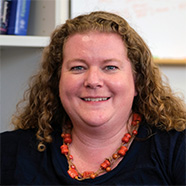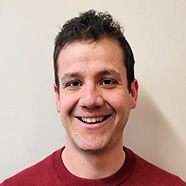Congratulations to our members who were successful Marsden Grant recipients in the latest funding round.
Associate Professor Louise Bicknell, Biochemistry
ORC3: A novel disease gene with a moonlighting role in brain development
$941,000
Biological complexity in higher organisms has been achieved in part by proteins taking on new moonlighting roles. While mutations in other ORC subunits cause a global reduction in growth, the team has discovered mutations in ORC3 in patients with a severe neurological disorder. They hypothesise that this clinical and genetic data has uncovered a moonlighting role for ORC3 in the brain, and they will explore this novel function using both in vitro and in vivo approaches. This project has the potential to define a novel disease gene and discover a novel moonlighting function for ORC3 in brain development.
Associate Professor Liz Ledgerwood, Biochemistry
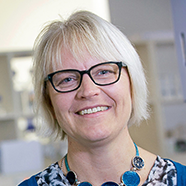
Probing functional protein oligomerisation in the crowded cellular environment
$933,000
A fundamental and widespread driver of protein functional diversity is oligomerisation. Within the crowded cellular environment, changes in oligomeric state will impact how proteins move, where they are localised, and what they interact with. However, most work on protein oligomerisation has used purified proteins, and we have little understanding of how these behaviours relate to function in living cells. By combining the use of live cell fluorescence fluctuation microscopy and oligomeric state-specific protein labelling the researchers will learn how oligomeric state controls function in the context of peroxiredoxins. Peroxiredoxins are proteins that are central to redox metabolism in all aerobic life forms, and switch between dimeric and ring-type decameric structures. As a prototypical example of the relationship between function and structural dynamics, this work will not only provide new insights into peroxiredoxin biology, but will also shed light more generally on whether oligomeric transitions identified in vitro predict in vivo behaviour of proteins.
Dr Nic Rawlence, Zoology

Unlocking the past: a novel approach to quantifying biodiversity loss in the fossil record
$942,000
Accurately distinguishing between living and extinct species in the fossil record relies on the assumption that living species have changed little in the recent past. Preliminary data suggest this key assumption may often be violated, which could lead to overestimates of biodiversity loss and faunal turnover in the geological record across the tree of life. However, these two competing interpretations, and their relative frequency, cannot be distinguished based upon fossil data alone. Dr Rawlence and his teame will resolve this universal challenge by applying a novel geometric morphometric and genetic approach to contemporary and Holocene reptile specimens from New Zealand and New Caledonia.
Dr Simon Jackson, Microbiology and Immunology
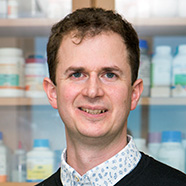
Understanding bacteriophage-pathogen specificity to support phage therapy
$941,000
The use of bacterial viruses (phages) is an emerging approach to treat antimicrobial-resistant bacterial infections, termed phage therapy. A major challenge for phage therapy is that closely related bacteria can differ vastly in their phage susceptibility profiles – highlighted by several recent clinical applications of phages that required screening thousands of phage candidates. Our research aims to understand the genetic basis for phage-bacteria specificity, focusing on immune systems that bacteria use to protect themselves from phages infections. Using new high-throughput genetic screens, Dr Jackson’s team will uncover how phages have evolved anti-immune proteins to evade or inactivate bacterial immunity. We will then discover which bacterial immune systems have evolved to counteract phage anti-immune proteins. Knowledge gained in this research will directly support future genomics-based approaches to developing phage-based therapies for bacterial infections.
And also, to our members who were awarded Fast Start Grants:
Dr Megan Leask, Physiology
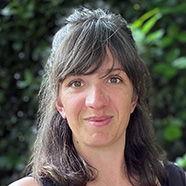
Omics led discovery and in vivo screening of Māori and Pacific immune variation
The human immune system is incredibly diverse and subject to recent population-specific adaptation, yet what we have learnt so far about genetic regulation of immune biology has been restricted to European based datasets. Expanding genetic analyses to Māori and Pacific peoples presents a significant opportunity to: 1. understand novel immune mechanisms in these populations, and 2. address a critical issue in genetics research – inequity of participation of minority populations. Leveraging substantial ‘omics data from Māori and Pacific peoples and a world-first quantitative in vivo enhancer assay, Dr Leask will screen and functionally test a panel of population-specific genetic variants for immune activity. The outcomes of this project will provide mechanistic proof that associated Māori and Pacific variants, genes and metabolites are causal in inflammatory conditions, revealing biology that can immediately proceed to drug development.
The information gained here in this research will also be incorporated into the Genomics Aotearoa projects Rakeiora and Variome, critical to the implementation of genomic based medicine into the healthcare system of Aotearoa. This research will contribute to capacity building in Māori and Pacific genetics and is the step change required for equitable access to precision medicine in Aotearoa.
Dr Leah Smith, Microbiology and Immunology
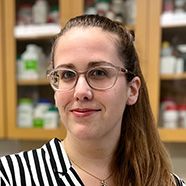
The influence of bacterial dormancy – Uncovering factors that affect phage-biofilm interactions
Viruses that infect bacteria (phages) represent a potential strategy towards combating antibiotic-resistant infections. However, a greater understanding of fundamental phage-bacterial interactions is needed to inform on applied therapies. In both nature and clinical settings, bacteria predominantly exist as biofilm aggregations where cell metabolism ranges from active to dormant. Most phage characterization has been performed using metabolically active bacteria, ignoring the complexity of the biofilm state. Dr Smith will use directed evolution and sequencing to identify phage factors that facilitate dormant cell infection and assess phage-biofilm interactions using single-cell analyses. This research will guide selection of phage characteristics to improve therapeutic outcomes.
Dr Ludovic Dutoit, Zoology
Harnessing the power of hybrids to resolve the role of gene expression in evolution
Understanding the way organisms adapt to change is a fundamental goal of biology. Genetic changes happen at two levels: in the underlying DNA code of proteins or in the DNA code that regulates how much of a given protein is produced. Knowledge of this regulation process is limited. Dr Dutoit’s team will use hybrids of two species of New Zealand short-horned grasshopper and game-changing genomic approaches to disentangle the relative role of the different regulatory elements. Their study is well-placed to revolutionise the understanding of gene-expression evolution, improving the way we understand biological adaptation in our changing world.

